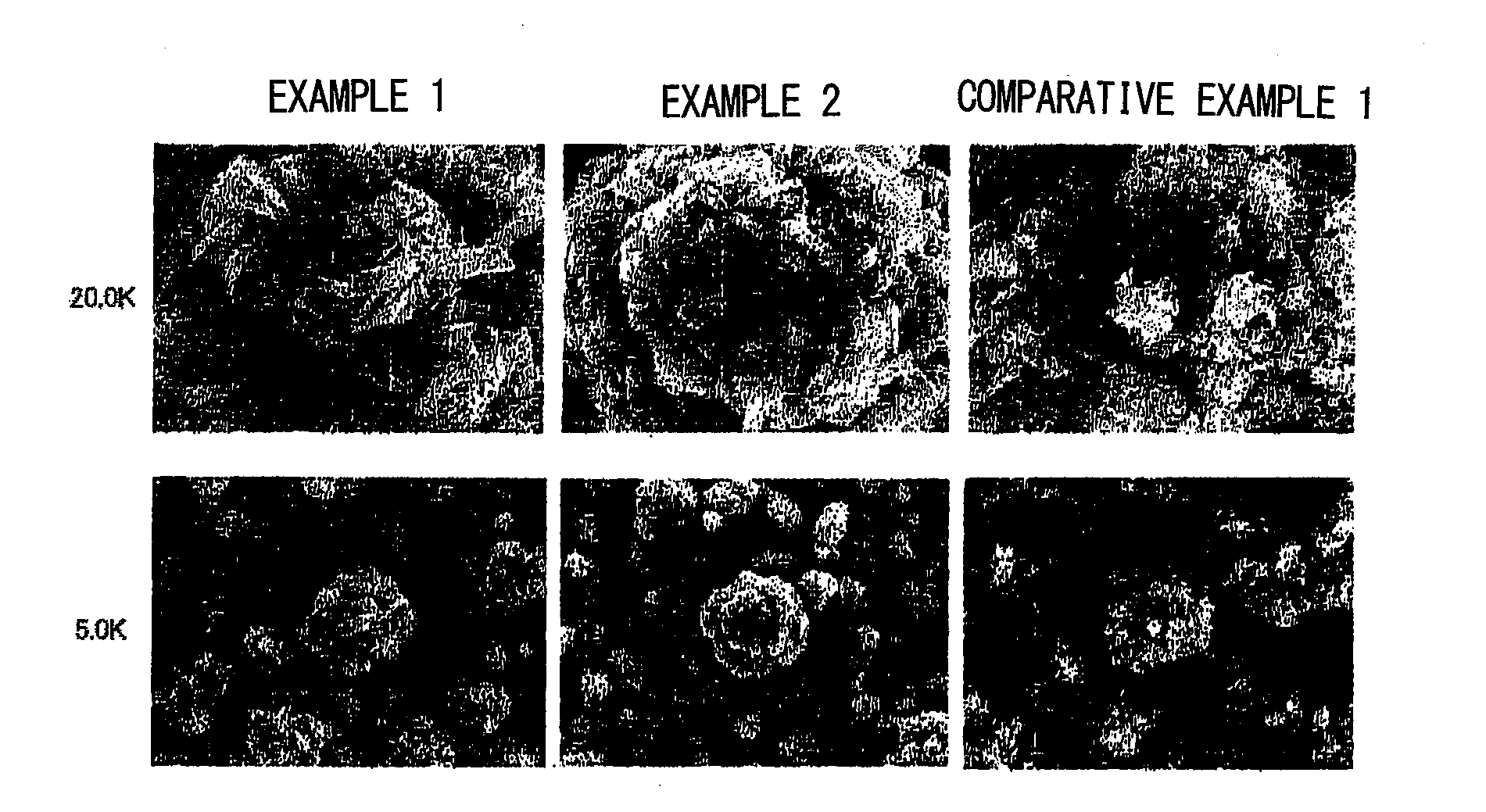Lithium-rich lithium metal complex oxide
a lithium metal complex and lithium-rich technology, applied in the field of lithium-ion batteries, can solve the problems of poor resource and cost of cobalt, reduced capacity as the cycle is repeated, poor density and high cost of cobalt, etc., and achieves high positive electrode density and high density
- Summary
- Abstract
- Description
- Claims
- Application Information
AI Technical Summary
Benefits of technology
Problems solved by technology
Method used
Image
Examples
example 1
[0073]After placing 15 L of water into a 15 L cylindrical reaction vessel equipped with a 70φ propeller stirrer having a single stirring blade and an overflow pipe, a 32% sodium hydroxide solution was added until a pH of 10.8 is reached and stirred at a rate of 1500 rpm while maintaining a temperature of 50° C. Then, a mixture of an aqueous nickel sulfate solution, an aqueous cobalt sulfate solution, and an aqueous manganese sulfate solution are mixed at an atomic ratio of Ni:Co:Mn of 20:10:70 (total amount of nickel sulfate, cobalt sulfate, and manganese sulfate being 80 g / L) was continuously added into the reaction vessel at a flow rate of 9 ml / min. During this, a 32% sodium hydroxide was added intermittently until the solution in the reaction vessel reaches a pH of 10.8, and a metal complex hydroxide was precipitated.
[0074]After 72 hours when the reaction vessel has reached a steady state, the metal complex hydroxide was continuously collected for 24 hours through the overflow pi...
example 2
[0078]After placing 15 L of water into a 15 L cylindrical reaction vessel equipped with a 70φ propeller stirrer having a single stirring blade and an overflow pipe, a 32% sodium hydroxide solution was added until a pH of 10.9 is reached and stirred at a rate of 1500 rpm while maintaining a temperature of 50° C. Then, a mixture of an aqueous nickel sulfate solution, an aqueous cobalt sulfate solution, and an aqueous manganese sulfate solution are mixed at an atomic ratio of Ni:Co:Mn of 20:10:70 (total amount of nickel sulfate, cobalt sulfate, and manganese sulfate is 103 g / L) was continuously added into the reaction vessel at a flow rate of 9 ml / min. During this, a 32% sodium hydroxide was added intermittently until the solution in the reaction vessel reaches a pH of 10.9, and a metal complex hydroxide was precipitated.
[0079]After 72 hours when the reaction vessel has reached a steady state, the metal complex hydroxide was continuously collected for 24 hours through the overflow pipe...
example 3
[0083]The metal complex hydroxide obtained in Example 1 was mixed with lithium carbonate such that the Li / Me ratio is 1.545. The mixture was filled in a sheath made of alumina, heated from room temperature to 400° C. under a dry air using an electric furnace, and maintained at 400° C. for one hour. Then, the temperature was increased to 700° C., and maintained at 700° C. for five hours. Furthermore, the temperature was increased to 1000° C., and maintained at 1000° C. for ten hours. Then, it was slowly cooled to room temperature. A rate of temperature increase for each temperature increase was assumed to be 200° C. / hr.
[0084]The lithium metal complex oxide thus obtained has a bulk density of 0.86 g / ml and a tapped density obtained by the aforementioned measuring method of 1.62 g / ml. Further, an average particle size (D50) was 5.97 μm, and a BET surface area was 0.70 m2 / g.
PUM
| Property | Measurement | Unit |
|---|---|---|
| density | aaaaa | aaaaa |
| average particle diameter | aaaaa | aaaaa |
| particle diameter | aaaaa | aaaaa |
Abstract
Description
Claims
Application Information
 Login to View More
Login to View More - R&D
- Intellectual Property
- Life Sciences
- Materials
- Tech Scout
- Unparalleled Data Quality
- Higher Quality Content
- 60% Fewer Hallucinations
Browse by: Latest US Patents, China's latest patents, Technical Efficacy Thesaurus, Application Domain, Technology Topic, Popular Technical Reports.
© 2025 PatSnap. All rights reserved.Legal|Privacy policy|Modern Slavery Act Transparency Statement|Sitemap|About US| Contact US: help@patsnap.com


